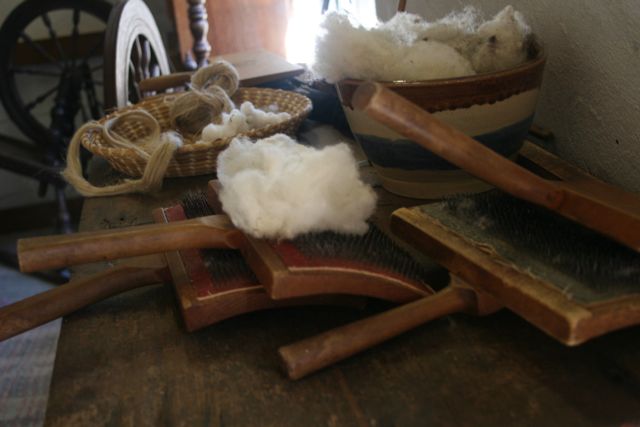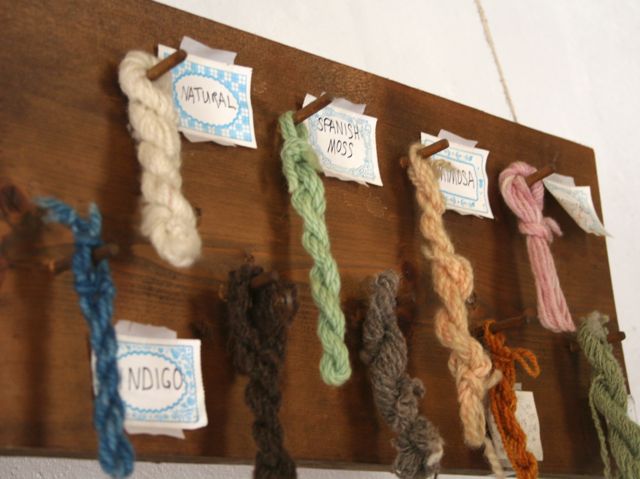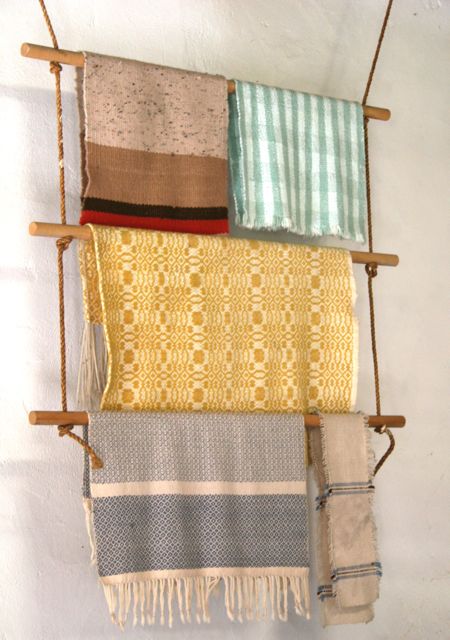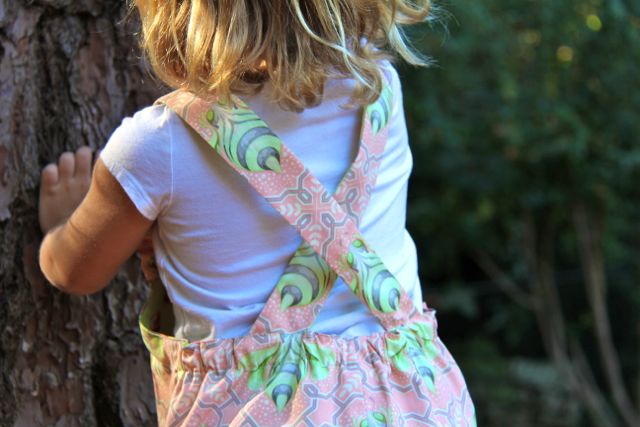As the last stop on our weekend in Charleston, we visited historic Middleton Place, a pre-Civil War era plantation on the outskirts of town. My husband and I were both raised going to historic mansions and museums, so for us this was a ton of fun–plus, his parents lived near here for a few years when they were first married, so it was nice to shoot some photos of the kids there to give to them. We got lucky and were there for Plantation Days: costumed interpreters all over the plantation doing tasks that were performed on the site over the past 300 years.
Obviously, I loved the weaving room the best. All the work areas are located off the stableyards, and must have been desperately hot in the summers–we were able to enjoy them in gorgeous, sunny 76-degree weather, but we asked the historic interpreter what it’s like in the summer. “Brutal,” she told us, very shortly and to the point. She said that there are folks every summer who ask why she doesn’t have a fan out in the weaving room to keep her cool, but that she doesn’t feel it’s fair to the women who worked there 300 years ago–she feels it honors their memory to allow visitors to see what it really felt like, even for a few minutes, and make their lives that much more real. I loved that perspective.
The other surprise I had was in talking to the gentleman making candles–it’s not as though I’ve never seen these tasks performed, and I’ve done a bunch of them myself, but he said one thing that made me really absorb it all more deeply: just in passing, he mentioned that when candlemakers were ready to render the animal fat and make their tallow candles, they’d go over to the weaver and “put in an order for some wicks…” He kept talking, but those words really sunk in with me. It had never really clicked for me that these folks had to make EVERYTHING they used in their daily lives–no running to the craft shop or ordering online to arrive at your doorstep. It was a whole other window into what homesteading must have been like, what a huge gamble to come over from another continent, what a cost to travel across this one, and how for all manner of people in all walks of life, their day-to-day was fundamentally different than what we experience today, on the most basic level. It was a really cool moment for me, and made me take in each piece of history we saw that day more deeply.
I get a little preachy sometimes, I think, when I talk about what a huge connection sewing is to the past, and how I believe that makes it valuable in and of itself–but also how I believe it’s good for us, therapeutic for us, meaningful for us to pursue. See all these stages of cloth production–from cotton fresh-picked to carded to spun and loomed to dyed and woven–made it very real to me that we’re super spoiled and have so much to be grateful for when we sit down at our machines. Imagine making an entire garment for yourself BY HAND. And then imagine the cost involved when you have to make every bit of every stage. Makes more sense that you’d have a MUCH smaller wardrobe. It’s thoughts like these that remind me why I want to sew for my family: I want to be part of that process that makes a connection to the past and to the future, that invests my time and effort into something that has intrinsic value and that offers me a reward not just in the product but in the process.
Hoping that you’re putting some history in your sewing today!










Mustard
October 19, 2010 at 4:24 pmI remember my cousin (2 years older than me) used to card wool after school. Then my Aunt would spin and knit with them. I’ve never tried it but I loved the sweaters my Aunt made for us. It seemed like a tough job though. I think that made the sweater more precious.
Rachel at Stitched in Color
October 19, 2010 at 9:17 pmThanks for sharing this! I’ve long wanted to go to Middleton (we live near Columbia, SC), but haven’t made it there yet. Since I homeschool my littles, now I have the excuse of making an educational fieldtrip. Sending this article to my homeschooling friend now!
mjb
October 20, 2010 at 12:36 pmI live in Williamsburg, VA and we went recently to the annual brick firing (where they build a kiln to fire the bricks they need for local projects) at Colonial Williamsburg. I thought it was interesting that part of building a house in the 18th century was to call the brickmakers and they would come dig up clay on your land and build the kiln in your yard so they wouldn’t have to transport them anywhere once they were done.